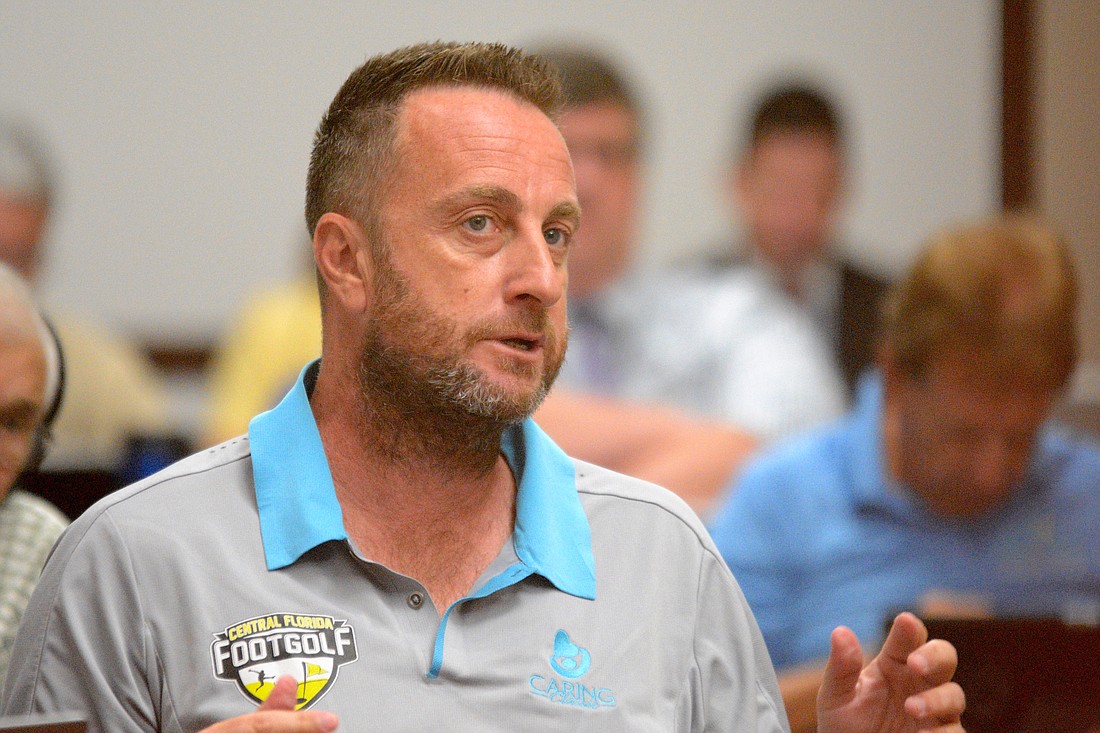- January 31, 2025
-
-
Loading

Loading

The Palm Harbor Golf Club has lost taxpayer money every year: Private company KemperSports runs the course at a loss each year, and the city of Palm Coast covers the deficit.
The city administration wants to put about $215,000 into sand bunker repair for the course. That would fix issues like discolored sand and poor drainage.
But the City Council is seeking new ways to make the course break even — or even turn a profit— and is looking at an unusual solution: footgolf.
Though played on golf course properties, the sport doesn’t involve a golf ball, but a soccer ball: In games that mix elements of soccer and golf, players try to kick the ball into a recessed “cup” in the ground, using as few shots as they can.
Steve Crane, an international footgolf champion and the vice president of technical services for FootGolf Design and Consulting, thinks he can solve the problem.
He could envision creating a footgolf program at the Palm Harbor Golf Club that would bring in money, creating a $40,000 profit for the city, he said. And, he said, adding foot golf at the Palm Harbor property wouldn’t require any extra staff.
“Footgolf is one of the fastest growing sports in the world,” he told the City Council at a council workshop Aug. 9. “Footgolf is generally played in the afternoons. … If you do it in the afternoons, four, five hours, you have a lot of footgolfers out when you’re at your most quiet for golfers.”
“So you can play foot golf and golf, on the same — without killing each other?” Mayor Jon Netts asked.
“Absolutely,” Crane said.
Netts was concerned: “I’ve been getting two or three emails a week from a golfer complaining about the fact that some of our residents are walking on the golf course … he claims it’s an issue of safety,” he said.
If golfers were turned off by footgolfers using the property, he said, that might turn some of them away, further cutting into the property’s revenue.
“The footgolf and the golf course can coexist,” Crane said. “We work with the course to make it as unobtrusive to the golfers as we possibly can.”
“If we do this,” Netts said to Crane at the workshop, “I like your proposal: You carry all the risk, your reward is based on how successful you are, it costs us nothing.” The issue, he said, is whether it would create a “net increase in assets”: whether the money brought in by new footgolfers would offset any lost by golfers. “On the other hand, the less we have to subsidize with taxpayer dollars, the happier everyone is going to be,” he said.
“If this is something you want to do, and you want to partner with me, I want it to be successful,” Crane said. “I’m madly passionate about the game, want to see it grow, want to see it succeed.”